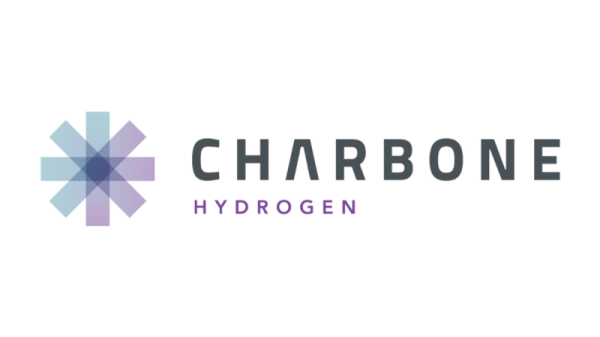Inflation is slowing and consumer confidence is rising, but so is credit card debt. That’s where rewards programs can help.
Most cardholders have access to them and are taking advantage at an unprecedented rate: The six largest U.S. credit card issuers paid $67.9 billion in reward redemption and partner payments in 2022, up 24% from the year before, LendingTree found, as Americans’ spending vaulted back from pandemic lockdowns.
Unlike the one-time boost from a tax refund, experts say many of the rewards available lately — to users of credit cards, debit cards and even “buy now, pay later” loans — can provide ongoing budgetary relief.
“With high prices and high interest rates, everybody’s looking to save money,” said Ted Rossman, senior industry analyst at Bankrate. “The main message is to get money back for the things that you would have bought anyway.”
As with any credit card, it’s unwise to carry a monthly balance if you can avoid it, especially since the average interest rate for a new credit card is 24.59%, according to LendingTree. Those fees could erode any cash back to be earned.
But the perks are widely available. More than two-thirds of cardholders have access to cash back, according to a recent Morning Consult poll, and in most cases it’s the safest and least complicated form of rewards redemption, Rossman said.
Cash-back cards with no annual fees are increasingly popular, Rossman said. He pointed to the Wells Fargo Active Cash Card, which — on top of its unlimited 2% cash rewards rate — offers a $200 sign-up bonus after spending $500 within three months, plus no interest for 15 months. Its rewards redemption options are flexible: Users can cash out with a statement credit, for example, or a direct deposit into their checking or savings account.
“I might shade a little bit towards the statement credit just because then you lower your bill, and it’s just a little more seamless,” said Rossman.
The gains from rewards programs might seem incremental — in some cases just a few dollars — but they’re one of few places many lower-income households can find relief. Among all U.S. cardholders, 75% of households earning less than $50,000 a year have reward cards, with cash back as the most common reward, Morning Consult found. Savings add up, too, especially when “stacking” card perks with existing discounts on offer.
Another popular option is the Chase Freedom Unlimited card, which lets users earn unlimited 1.5% cash back on all purchases. That rate jumps to 3% for certain spending categories that rotate quarterly, like dining and drugstores, and to 5% on travel purchases via the Chase Ultimate Rewards portal. (New cardmembers currently get a $200 bonus plus 5% on gas and grocery purchases.)
But there are some caveats. Depending on the card, redeeming points directly with a retailer can often mean less value per point than simply getting a statement credit or bank deposit, Rossman said. Plus, not every merchant qualifies. A LendingTree study last year found that while the right credit card can earn households more than $300 a year in grocery rewards, large chains such as Walmart and Costco are often excluded.
“Credit card rewards are fairly straightforward,” said Matt Schulz, chief credit analyst at LendingTree and author of the forthcoming book, “Ask Questions, Save Money, Make More: How to Take Control of Your Financial Life.” “But this is one particular instance where it can get a little bit tricky, because so many people do grocery shopping at places that aren’t exclusively grocery stores,” he said.
Schulz noted that consumers with poor credit aren’t locked out of card rewards: The highly ranked Discover Cashback Debit account, for example, offers 1% cash back on up to $3,000 in purchases each month, which can save users up to $360 per year.
Consumers can often find rewards and discounts for their recurring monthly bills, experts said.
Payment options are an easy place to start. Utilities are often looking to lower their card processing fees, and many already provide credits for setting up automatic payments. Verizon, for example, offers a $10 monthly discount to its mobile and FiOS customers who do this, but Rossman suggests comparing any potential cash-back or points rewards first.
“If I’m paying $200 a month for internet, cable and phone and I’m getting 2% cash back on a credit card, that’s only a $4 benefit,” he said, so in this case it would make sense to switch to autopay.
Buying a home is more expensive than renting one in 46 of the top 50 U.S. metro areas, but some tenants can still find some rewards in their rent payments.
The Bilt Rewards program lets anyone open an account, pay rent through its app, and earn points that can be redeemed for discounts on flights, fitness classes, rent itself or even a home down payment. In addition to its free credit-reporting feature — the company says 24 months of on-time payments can result in a 40 to 60 point credit score jump — Bilt will even send a physical check to pay your landlord, as some don’t accept electronic payments.
There are some catches with the Bilt program: If you don’t live in a Bilt-associated building, you won’t earn rewards unless you have the Bilt World Elite Mastercard credit card, which has its own stipulations. For example, users must make at least five purchases on the card per month to get rewards. (Your monthly rent payment counts.)
Even so, the Bilt card “fills a really big hole,” Rossman said. “Rent is the biggest monthly expense for so many households, and it’s not something that they’ve been able to maximize from a rewards standpoint.”
In general, Schulz said, “people have more power in these situations than they think they do,” especially by asking open-ended questions of customer service. “Instead of asking, ‘Can I get a lower interest rate on this credit card?’ you can ask, ‘Whom on your team can I speak with about potentially lowering my rate?’” he said.
While “buy now, pay later” programs come with risks of their own, consumers are flocking to the services to help extend their cash flow. Now, some providers are launching their own perks to reward users for good behavior.
Afterpay has partnered with the gift-card company Nift — which has a network of over 12,000 direct-to-consumer brands — to let customers select a gift upon making their second on-time payment. Perks range from discounts for restaurants and meal-delivery kits to gift cards for sneakers and teeth-aligners. Klarna also offers a free-to-join rewards club where users can earn a point for every dollar spent, then redeem them at a number of retailers.
These offerings are mainly designed to keep buy now, pay later customers spending, said Sheridan Trent, director of market intelligence for TSG, a consulting firm focused on electronic payments. But she said they could encourage users to avoid amassing an unwieldy number of payment plans on multiple platforms.
“It is good to give people some financial incentive to be paying it back in a responsible manner,” she said.







































